In late April, the Physiopedia team traveled to Guadalajara, Mexico, to attend the International Society of Prosthetics and Orthotics (ISPO) World Congress. This was an excellent opportunity to not only present some of the key activities that are being implemented as part of ReLAB-HS, but to highlight the importance of interprofessional collaboration as a means of strengthening the rehabilitation workforce globally.
The WHO’s Rehabilitation 2030 Initiative recognises that there is an urgent need to strengthen and integrate rehabilitation into health systems worldwide. A strong and cohesive rehabilitation workforce can help address the growing need for rehabilitation by improving access to services as well as the quality of care received by patients, particularly in low and middle income countries. One of the key steps towards strengthening the rehabilitation workforce and making this vision a reality is to foster effective interdisciplinary collaboration.
ReLAB-HS is a direct response to this call to action and Physiopedia’s role has been to develop tools that can help strengthen the rehabilitation workforce through an interdisciplinary approach. The culmination of this work has been the development of an International Rehabilitation and Education Toolkit (IRETT).
The IRETT is a series of courses and resources that can be integrated into any education or training programme, anywhere in the world. The tools that have been developed to date are designed to address four key areas identified across the rehabilitation professions (Physiotherapy, Occupational Therapy, Speech and Language Pathology, Prosthetics and Orthotics) as opportunities for improvement and closer collaboration:
- Professional Regulation of the professions and continuing professional development
- Academic capacity of education institutions to deliver programmes of international standards
- Clinical practice delivery of clinical knowledge and skills development training
- Advocacy to raise awareness and understanding of rehabilitation
Our interdisciplinary team from Physiopedia, represented by Angela Patterson (OTD, OTR/L, FNAP), Larisa Hoffmann (PT, PhD) and Martina Lukin (PO) attended the ISPO World Congress in Guadalajara from April 24th to 27th, and took the opportunity to talk about the creation of the IRETT tool for strengthening academic capacity as well as how the IRETT is being implemented in Uganda, Ukraine, Pakistan and Burma with positive and lasting impact for the rehabilitation professions.
Identifying Opportunities for Interprofessional Education for Rehabilitation Professionals
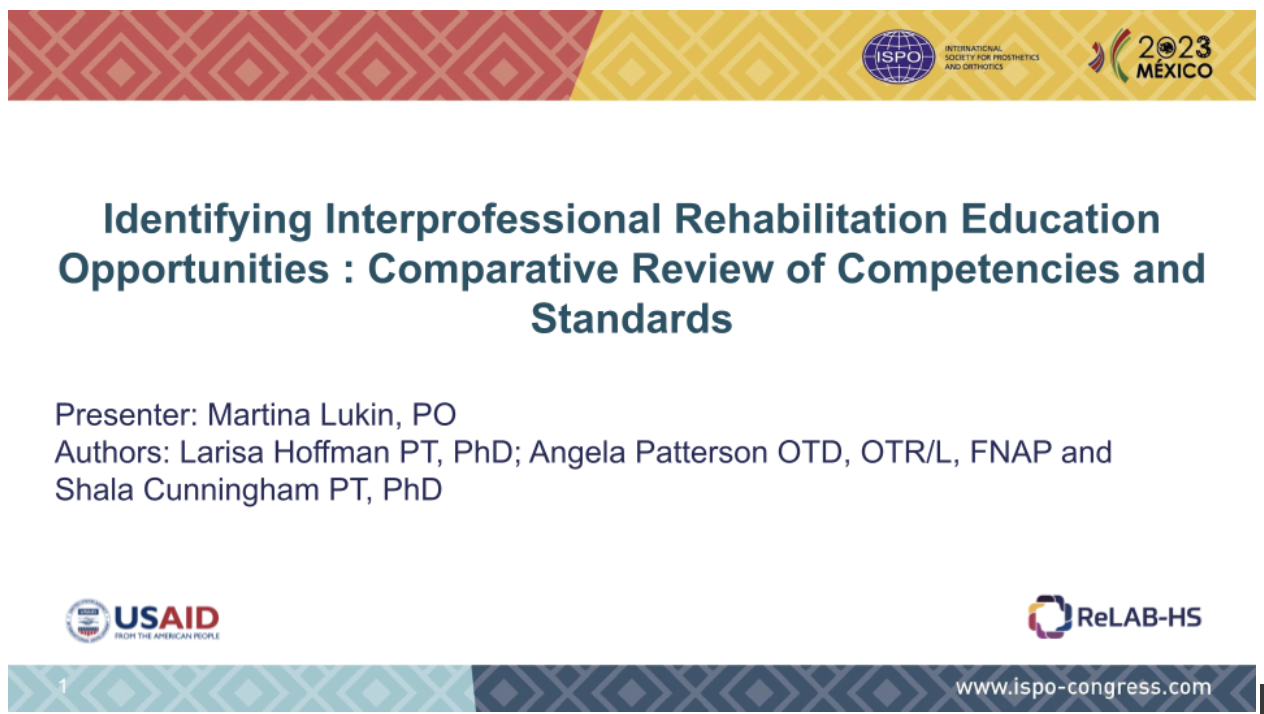
This free paper presentation focused on Interprofessional Education (IPE) and how the IRETT can be used to build institutional capacity and enable more opportunities for IPE to be incorporated into entry-level training programmes across the Rehabilitation professions; Occupational Therapy, Physiotherapy, Speech and language pathology, Prosthetics and Orthotics.
IPE is “when two or more professions learn with, about, and from each other to enable effective collaboration and improve health outcomes” (Gilbert 2010). Some of the key barriers to IPE include lack of available training programmes, limited resources and lack of qualified educators to run the programmes. The IRETT features a set of ten “core” online courses that have been developed specifically to overcome some of these barriers to IPE. The ten courses can be used interprofessionally to supplement existing resources and can be adapted to any context, anywhere in the world.
In determining the ten core courses, the Physiopedia team undertook a rigorous process of analysis and mapping including survey data, interview data and a review of more than 200 documents including standards of practice, professional competencies, curricular plans and course syllabi. The final stage of curriculum mapping provided an understanding of the similarities and differences within and between professions and identified opportunities for IPE and collaboration.
Download the presentation PDF for a detailed overview of the analysis process and the ten core courses that form part of the IRETT.
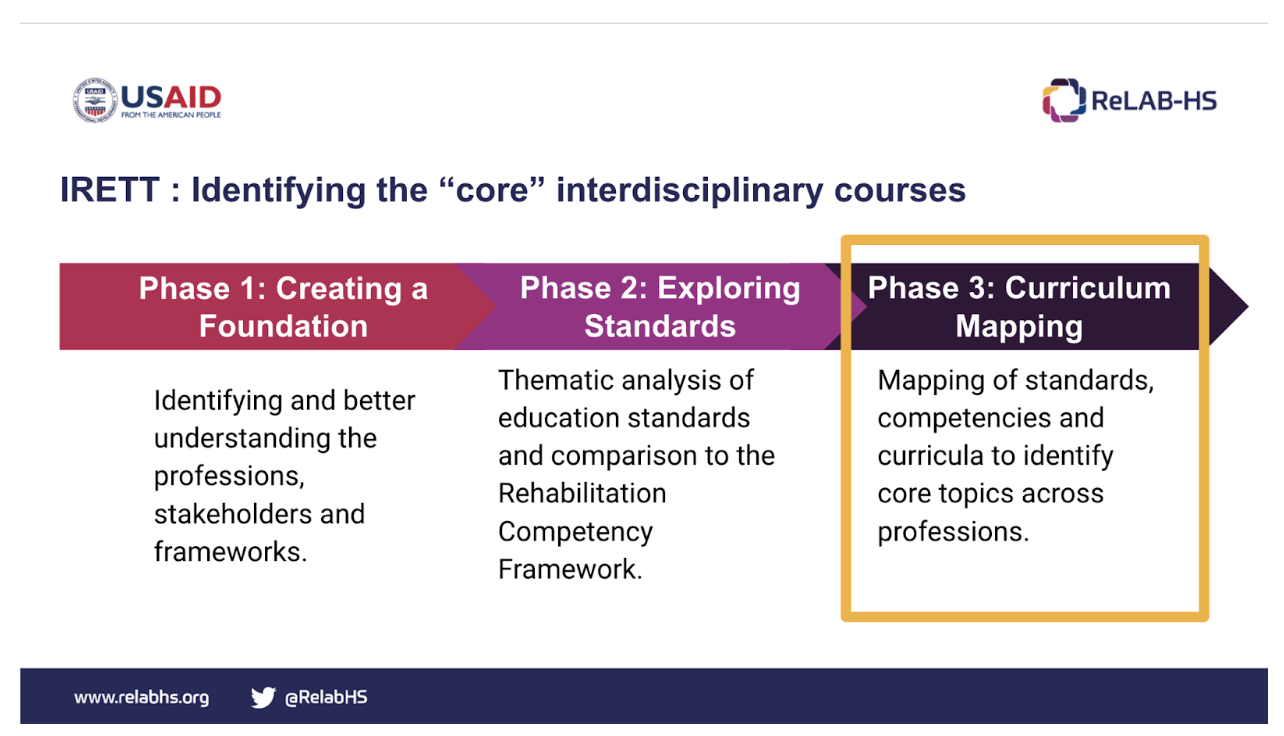
Interprofessional Rehabilitation Education; Developments, Opportunities and Benefits for the Prosthetics and Orthotics Profession
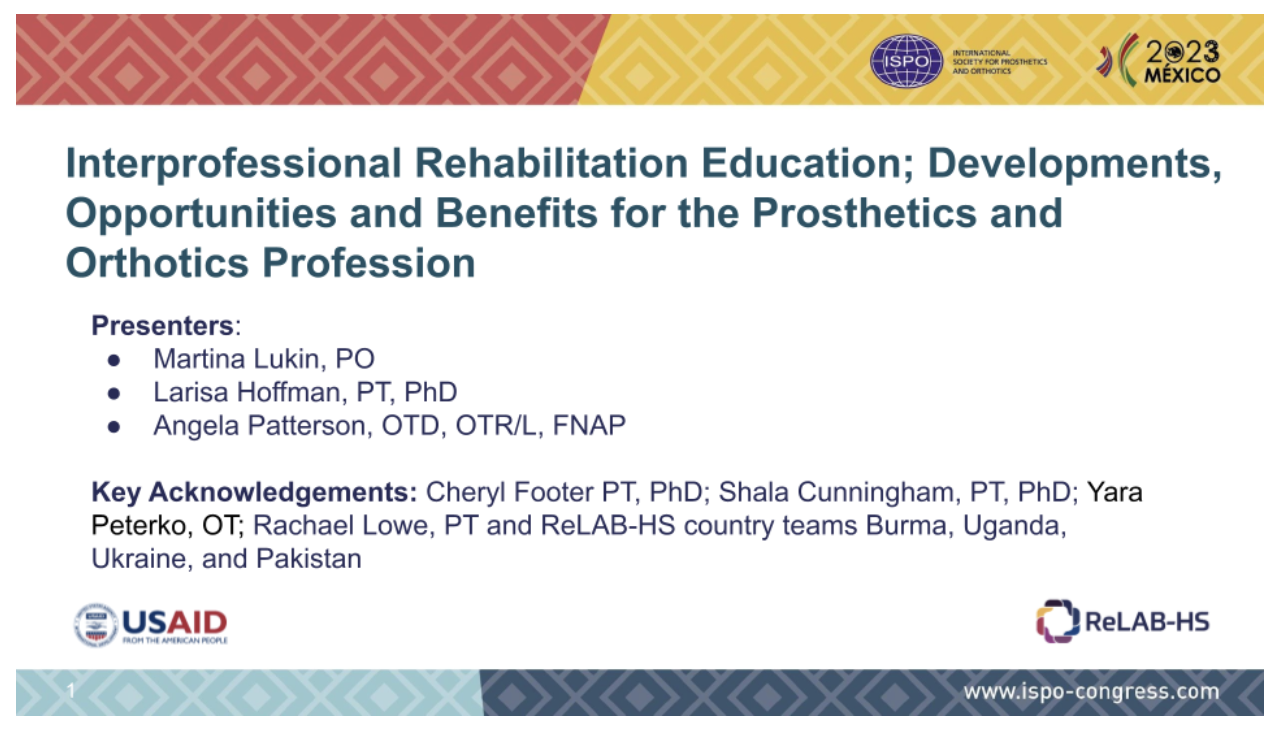
In this Symposium presentation, Angela Patterson (OTD, OTR/L), Larisa Hoffman (PT, PhD) and Martina Lukin (PO) present some of the activities that are being implemented as part of the ReLAB-HS initiative, with a focus on the IRETT and how it can be used to create more opportunities for IPE.
The benefits of IPE and collaborative practice are far-reaching. Collaborative practice in the rehabilitation setting can help improve the efficiency of rehabilitation teams by reducing the duplication of services, ensuring more frequent and appropriate patient referrals and improving the continuity and coordination of care. Interprofessional collaboration has also been shown to help with recruitment and retention of health workers, which is particularly important for the PO sector.
Through Physiopedia’s work for ReLAB-HS, we were able to identify the key barriers to IPE and multidisciplinary collaborative practice. The tools developed for the IRETT can be used to address these key challenges.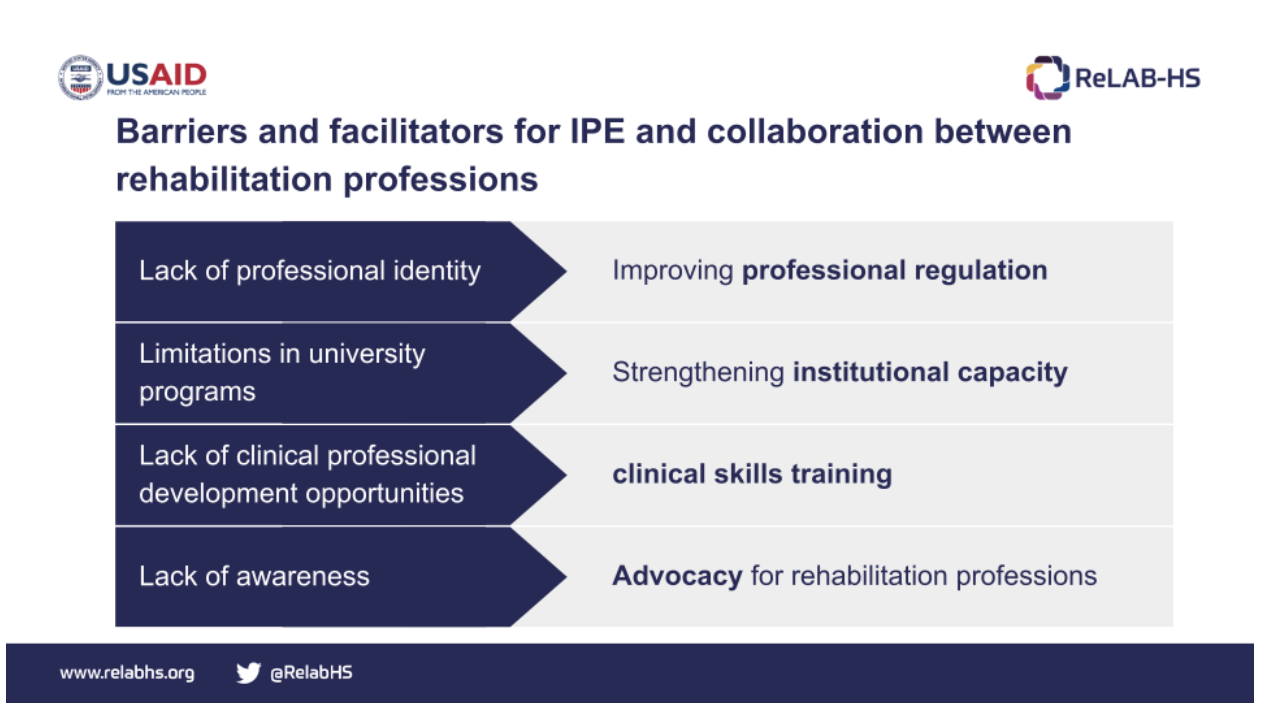
As part of the symposium, we invited representatives from four countries to record their experiences thus far in implementing the IRETT to support IPE and interprofessional collaboration. The videos were the highlight of the symposium, showcasing the impact of the IRETT and its ability to bridge contexts and bring professionals together.
From Uganda, Herbert Omoding (PT) talked about how the IRETT is being used to connect and foster collaboration between leaders of the professional associations and their members. The professional regulation tool is helping to build an empowered rehabilitation workforce with clearly defined requirements for continued professional development (CPD) and greater opportunities to learn from other professionals.
In Pakistan, the IRETT is being used to build Institutional capacity through improved interprofessional collaboration and greater access to CPD resources and training materials that are being shared across the professions, and internationally. Neelum Zehra (OT) discussed how the IRETT has enabled the universities to improve education of rehabilitation professionals by aligning programmes with international standards and expectations.
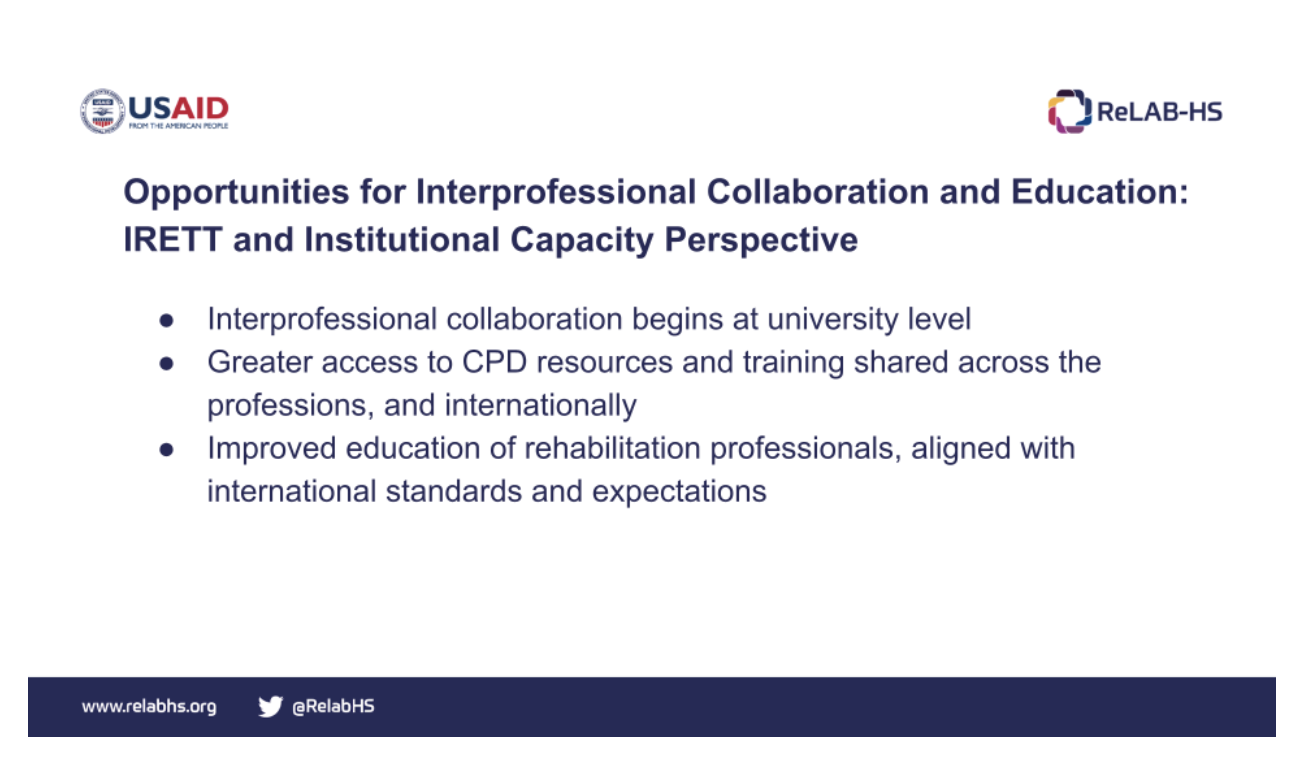
In Burma, Hsu Wai Mon Oo shared the positive impact of clinical skills training in empowering rehabilitation professionals in Burma and encouraging them to collaborate more closely by sharing knowledge, information and resources. Ultimately, the IRETT has helped foster a mindset of lifelong learning in the absence of professional regulation.
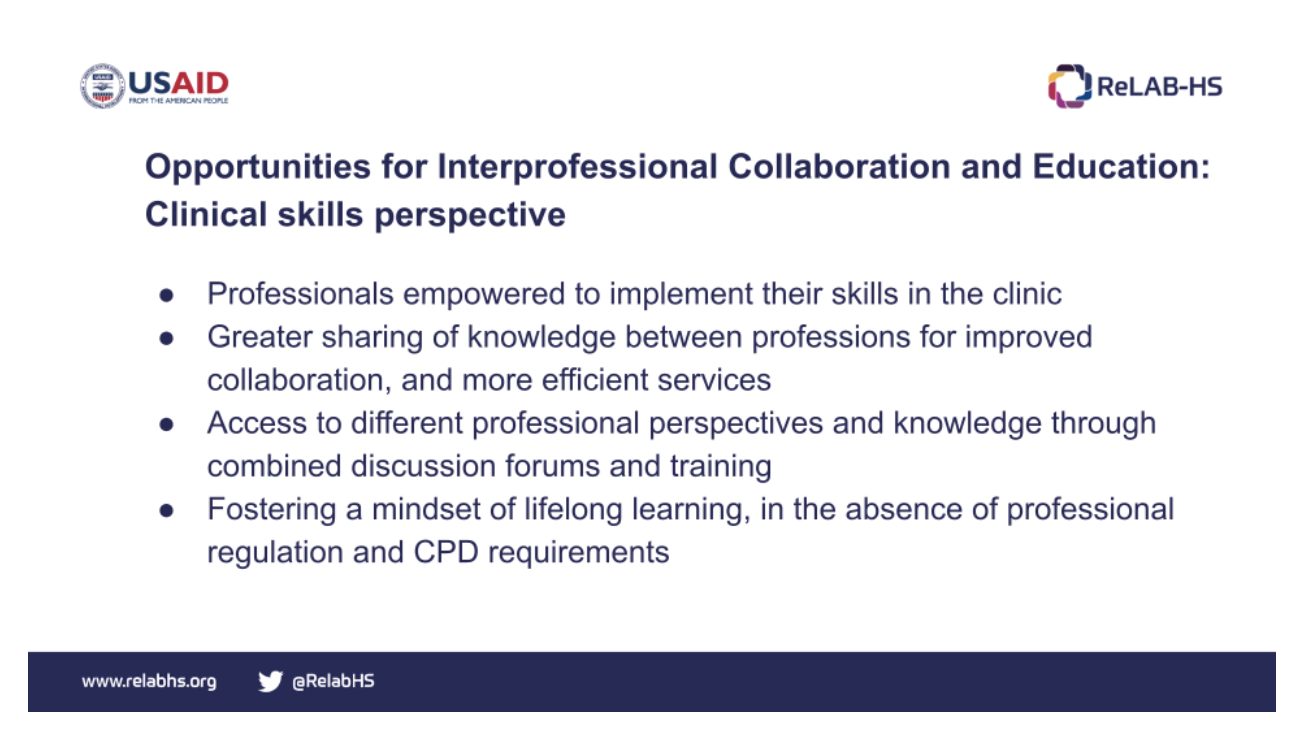
Finally, in Ukraine the IRETT has been used to advocate for the rehabilitation professions by raising awareness of rehabilitation and thereby encouraging more professionals to choose a career in rehabilitation. Olha Kovalchuk (PhD) discussed how the IRETT has been used in Ukraine to empower rehabilitation professionals with the skills to influence policy, improve quality of services and service delivery.
Download the presentation PDF to learn more about how the IRETT is being implemented in these four countries.
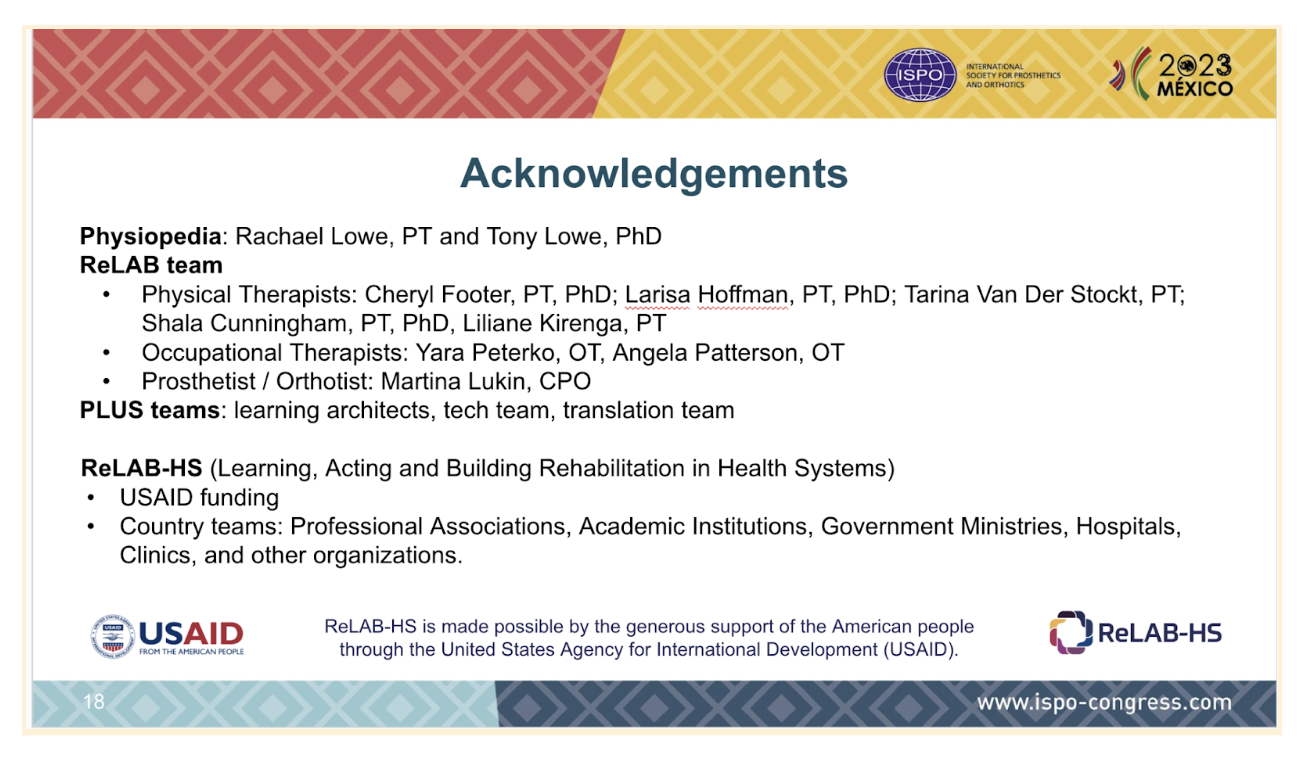


ReLAB-HS is made possible by the generous support of the American people through the United States Agency for International Development (USAID) and
is implemented under cooperative agreement number 7200AA20CA00033. The consortium is managed by prime recipient, Johns Hopkins Bloomberg School of Public Health.

